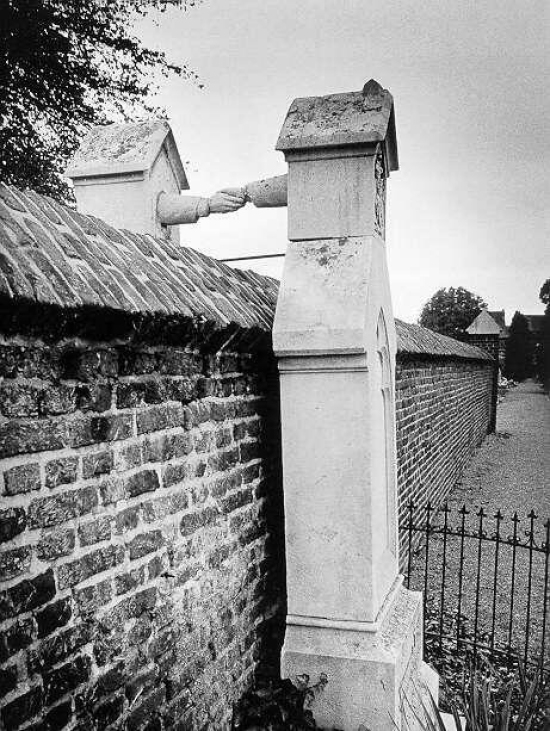Just as for every center there is a corresponding periphery — i.e., they are co-constitutive — so too for every boundary there is a transgression under control and a workaround that was not anticipated by the rule. For example, consider these adjoining Dutch graves from the late 19th century.
 The caption reads:
The caption reads:
The graves of Colonel J.C.P.H and Catholic noblewoman J.W.C Van Gorkum. They were married in 1842. In 1888, Van Gorkum died, she wanted to be buried next to her husband. Pillarisation (a form of religious and political segregation in Holland [verzuiling in Dutch]) was still in effect at the time, and according to the law, this was impossible. His wife was buried on the other side of the wall, which was the closest she could get to her husband.
Photo/caption source: Retronaut; for more information, see “Dutch ‘Multiculturalism’: Beyond the Pillarisation Myth” (2007; PDF).
